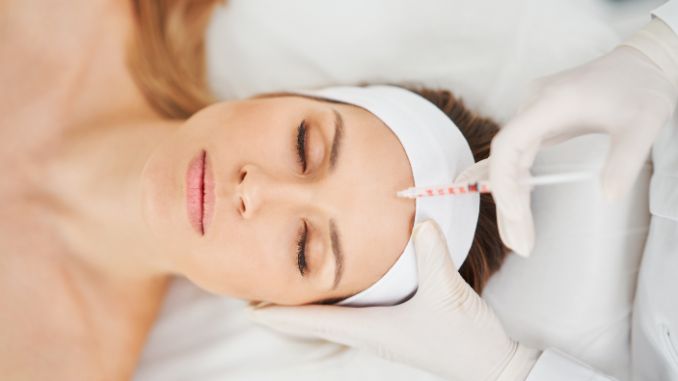I’ve often wondered—is Botox silicone [2] really be the secret to a younger, smoother appearance, or is it just too good to be true? If you’re like me, you’ve probably heard all the buzz about its transformative effects and some whispers about potential risks.
Botox, derived from botulinum neurotoxins, has become a household name in the beauty and wellness world, but it’s not without its complexities.
Before I—or you—commit to those tiny injections, it’s so important to understand the full picture.
That’s why I’m diving into the facts, so we can explore this topic together and make smarter, safer cosmetic choices.
What is Botulinum Toxin, and How Does It Work?
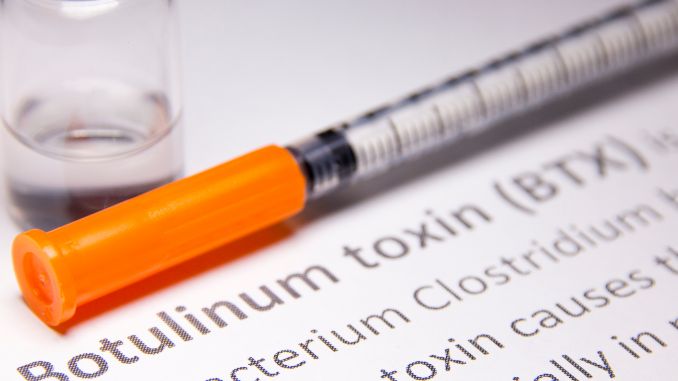
Botox is a purified form of botulinum toxin [1], a neurotoxin produced by Clostridium botulinum. When injected in small doses, Botox blocks nerve signals to the muscles, temporarily paralyzing them.
This reduces the appearance of wrinkles and fine lines caused by repeated facial expressions, like frowning or squinting, is botox silicone.
It is important to note that Botox is a specific botulinum toxin product and should not be confused with other similar products.
Botox works by targeting specific muscles under the skin:
- Relaxing Wrinkles: By limiting muscle movement, Botox smooths crow’s feet, forehead lines, and frown lines.
- Medical Benefits: Botox has FDA approval for chronic migraines, excessive sweating, and overactive bladder conditions.
The effects typically last 3–6 months, after which muscle activity gradually returns to normal.
While this mechanism is highly effective, it’s also why understanding Botox risks is essential before treatment.
Benefits and Uses of Botox
Botox injections have numerous benefits and uses, making them a popular choice for both cosmetic and therapeutic purposes.
The primary benefit of Botox is its ability to temporarily relax facial muscles, reducing the appearance of fine lines and wrinkles.
Dr. Ranelli, a Botox expert, emphasizes that “Botox is primarily used for the upper third of the forehead. It gives you amazing results—really, you can get the results of a forehead lift without surgery with regular applications of Botox.
In addition to its cosmetic uses, Botox has been FDA-approved for the treatment of various medical conditions, including:
- Chronic Migraines: Botox injections can help alleviate migraine symptoms by blocking pain transmission.
- Overactive Bladder: Botox can help relax the bladder muscles, reducing the frequency of urination.
- Muscle Weakness: Botox can help improve muscle function in individuals with muscle weakness or paralysis.
- Eye Spasms: Botox can help relax the muscles around the eyes, reducing the frequency of eye spasms.
These diverse applications highlight Botox’s versatility, but it’s crucial to consult with a healthcare provider to determine if it’s the right option for you.
Common Botox Injections Risks and Side Effects

Just like any medical or cosmetic procedure, Botox has potential side effects. Most are minor, but some require immediate attention.
While most side effects are minor, the word is Botox silicone serious adverse effects require immediate attention.
1. Short-Term Risks
- Injection Site Reactions: Redness, swelling, or bruising are common but temporary side effects of a botox injection. It is important to consult a healthcare provider to determine the appropriate type of botulinum toxin injection for your needs and conditions.
- Facial Asymmetry: Drooping eyelids or uneven results may occur if Botox spreads to unintended areas.
- General Symptoms: Nausea, headaches, or flu-like symptoms may follow treatment.
2. Rare but Serious Adverse Effects
- Toxin Spread: In rare cases, Botox can spread beyond the injection site, causing trouble swallowing, blurred vision, breathing, or speaking. Difficulty breathing is a potential serious side effect, especially for patients with existing breathing problems.
- Allergic Reactions: Itching, rash, or swelling symptoms could indicate an allergy.
- Fatalities: Although exceedingly rare, improper administration or high doses have been linked to fatalities.
To truly understand the risks and benefits of Botox, it’s essential to clear up common misconceptions, especially those related to its composition and how it works.
Is Botox Silicon?
A common misconception is that Botox contains silicon, but this isn’t true. Botox is a purified form of botulinum toxin—a protein produced by Clostridium botulinum.
Its primary function is to relax targeted muscles temporarily, reducing wrinkles and fine lines caused by repetitive facial expressions.
Silicon (or silicone), on the other hand, is a synthetic polymer often used in implants or fillers to add volume or structure.
Unlike Botox, which works by affecting muscle activity, silicone-based treatments focus on reshaping or enhancing physical features.
Why This Matters: Understanding what Botox is—and isn’t—can help you avoid misinformation and make safer cosmetic choices.
Mixing up Botox with silicon-based products may lead to unrealistic expectations or even unsafe treatments if administered by unqualified providers.
Always confirm that your injector uses FDA-approved Botox, not counterfeit or is Botox silicone.
Now that we’ve debunked the myth about Botox being silicon let’s explore how to ensure you’re getting safe and effective treatments by choosing a qualified healthcare provider.
Choosing a Qualified Healthcare Provider

Choosing a qualified healthcare provider is crucial when considering Botox injections.
Here are some tips to help you find the right provider:
- Verify Credentials: Look for a healthcare provider who is licensed and experienced in administering Botox injections.
- Check Reputation: Research the provider’s reputation and read reviews from previous patients to gauge their satisfaction.
- Ensure Authenticity: Confirm that the provider uses genuine Botox products and adheres to proper injection techniques.
- Inquire About Experience: Ask about the provider’s experience with Botox injections and their success rate to ensure you’re in capable hands.
Selecting a skilled and reputable healthcare provider can significantly reduce the risk of complications and enhance the overall success of your treatment.
Preparation and Procedure
1. Before the Procedure
Before undergoing Botox injections, it’s essential to prepare yourself for the procedure.
Here are some steps to follow:
- Inform Your Provider: Tell your healthcare provider about medications you’re taking, including prescription and over-the-counter medications.
- Avoid Blood Thinners: Refrain from taking blood-thinning medications, such as aspirin or warfarin, for at least a week before the procedure to minimize bruising.
- Clean the Treatment Area: Remove any makeup or skincare products from the treatment area to ensure a clean surface for the injections.
- Skip Heavy Meals and Alcohol: Avoid eating heavy meals or drinking alcohol before the procedure to reduce the risk of nausea or other side effects.
2. During the Procedure
During the procedure, your healthcare provider will use a small needle to inject Botox into the treatment area.
Here’s what you can expect:
- Quick Process: The procedure typically takes 10-15 minutes to complete; it is Botox silicone.
- Mild Discomfort: You may feel a slight pinching or stinging sensation during the injection, but this is usually mild and temporary.
- Numbing Options: Your healthcare provider may use a topical numbing gel to reduce discomfort.
- Post-Injection Effects: You may experience mild bruising or swelling after the procedure, but this should resolve within a few days.
Following these preparation steps and understanding the procedure can ensure a smoother experience and better results from your Botox treatment.
Recovery and Outlook After Botox
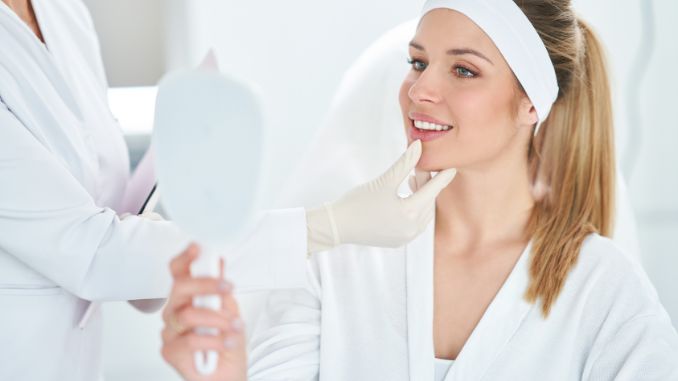
Botox recovery is typically quick and hassle-free, but there are important steps to ensure the best results and minimize risks, is botox silicone.
Understanding the recovery process and potential long-term effects of botulinum toxin injections is crucial for achieving optimal outcomes and maintaining safety during treatments.
1. What to Expect After Treatment: Injection Site Care
- Immediate Effects: Mild swelling, redness, or bruising at the injection site is common but subsides within a few hours or days. Additionally, mild swelling, redness, or bruising can occur in the injected muscles.
- Results Timeline: Full effects of Botox are usually visible within 7–14 days after treatment.
- Activity Restrictions: Avoid lying down, exercising, or rubbing the treated area for 4–6 hours post-injection to prevent the toxin from spreading.
2. Long-Term Outlook
- Botox results last 3–6 months, depending on factors like metabolism and treatment area.
- Regular treatments may be required to maintain results, but overuse can lead to resistance or diminished muscle responsiveness.
- Following your provider’s post-treatment instructions is key to achieving safe and consistent results.
Factors That Increase Botox Risks
Certain factors can heighten the chances of complications:
- Untrained Providers: Injections by unlicensed practitioners increase the risk of incorrect dosages and improper technique. Proper administration techniques are crucial when dealing with botulinum toxins to minimize risks.
- Underlying Conditions: People with nerve or muscle disorders (e.g., ALS, myasthenia gravis) are at higher risk.
- Counterfeit Botox: Always verify that your provider uses FDA-approved products to avoid contaminated or fake injections.
Comparing Botox Risks to Other Cosmetic Procedures
How does Botox compare to other cosmetic options like fillers or surgery?
Here’s a breakdown:
1. Botox
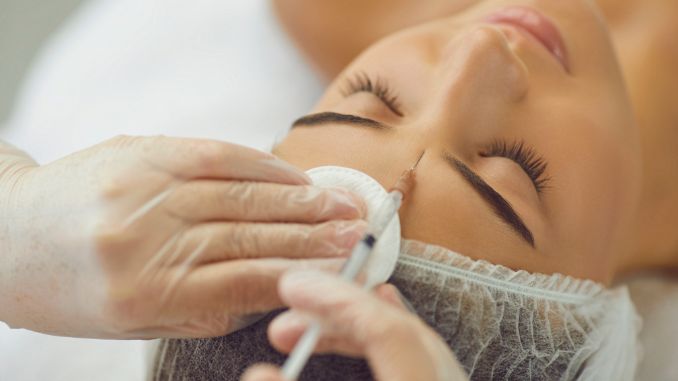
- Common Risks: Drooping eyelids, muscle weakness.
- Downtime: Minimal (hours).
- Longevity: 3–6 months.
2. Fillers
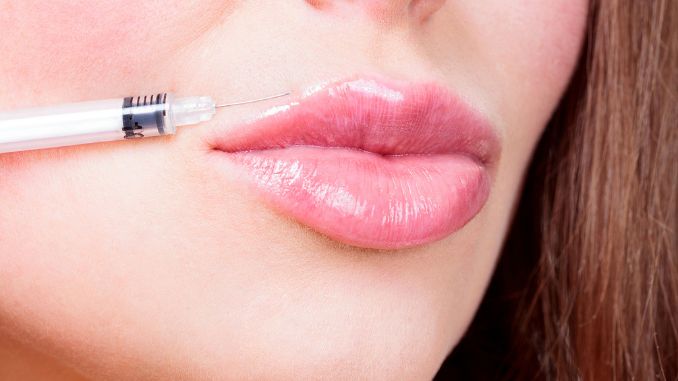
- Common Risks: Allergic reactions, lumps, bruising.
- Downtime: Minimal (days).
- Longevity: 6–18 months.
3. Surgery
- Common Risks: Infection, scarring.
- Downtime: Weeks to months.
- Longevity: Permanent.
Minimizing Botox Risks: Expert Tips
Take these steps to reduce the chances of complications:
- Choose a Qualified Provider: Verify your injector is licensed and experienced. Proper administration techniques for botulinum toxin injection are crucial to minimize risks and ensure effective results.
- Discuss Your Medical History: Share any underlying conditions or medications with your provider.
- Follow Pre-Treatment Guidelines: Avoid alcohol and blood-thinning medications to reduce bruising.
- Stick to FDA-Approved Products: Ensure only approved Botox is used during treatment.
1. New Trends in Botox and Associated Risks
Botox is evolving, with new trends reshaping its use. Here are a few you should know about:
- Micro-Botox: Tiny doses injected superficially to tighten pores and improve skin texture. Risks include less noticeable results if not administered carefully. The Food and Drug Administration (FDA) plays a crucial role in ensuring the safety of these new Botox trends.
- Preventative Botox: Popular among younger individuals to delay wrinkle formation. Overuse may lead to unnecessary treatments and diminished muscle responsiveness.
These innovations offer exciting possibilities but should be cautiously approached and administered by trained professionals, as is botox silicone.
2. Holistic Anti-Aging Alternatives
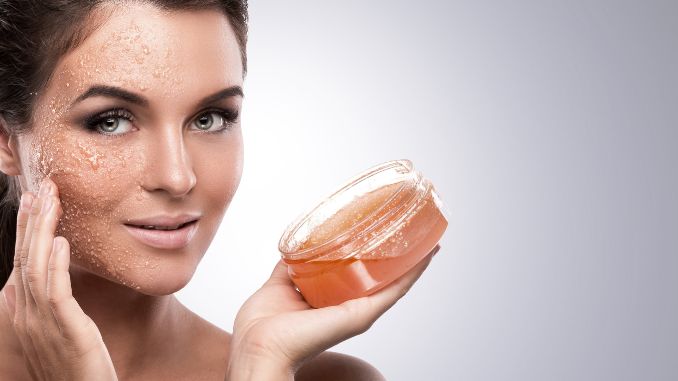
Not ready to take the plunge with Botox? Consider these safer, non-invasive options:
- Facial Exercises: Tone your facial muscles naturally with consistent routines.
- Skincare Regimens: Use retinol, vitamin C, and sunscreen to maintain healthy, youthful skin.
- Hydration and Nutrition: Keep your skin glowing from within with a balanced diet and plenty of water.
By adopting these habits, you can achieve a vibrant appearance without needles.
Conclusion: Is Botox Worth the Risk?
Botox can offer impressive results, but it’s not a one-size-fits-all solution.
By understanding the risks, choosing qualified providers, and exploring holistic alternatives, you can make informed decisions that align with your goals.
Remember, feeling confident in your skin starts with making choices prioritizing your safety and well-being.
If you’re looking for a non-invasive approach to anti-aging, check out the 14-Day Anti-Aging Quick Start Program—a holistic guide to looking and feeling your best naturally.

Frequently Asked Questions
Who should not get Botox?
You should avoid Botox if you are pregnant, breastfeeding, or have conditions like neuromuscular diseases or drooping eyelids (ptosis).
What makes someone a bad candidate for Botox?
You may not be a good candidate if you are in poor health, have thick skin, existing muscle weakness in the injection area, or sensitive skin prone to allergic reactions.
Can older adults receive Botox?
While the FDA recommends Botox for those under 65, it doesn’t prohibit older individuals from using it, though safety and effectiveness can vary.
Are there permanent risks with Botox?
Long-term Botox use can cause permanent changes in facial expression, such as a mask-like appearance or reduced facial animation.

Rick Kaselj MS, is a leading kinesiologist and injury specialist as well as co-creator of the best-selling Unlock Your Hip Flexors program. Rick creates exercise programs that help people heal injuries and eliminate pain, so they can go back to living a full, active, healthy life.

